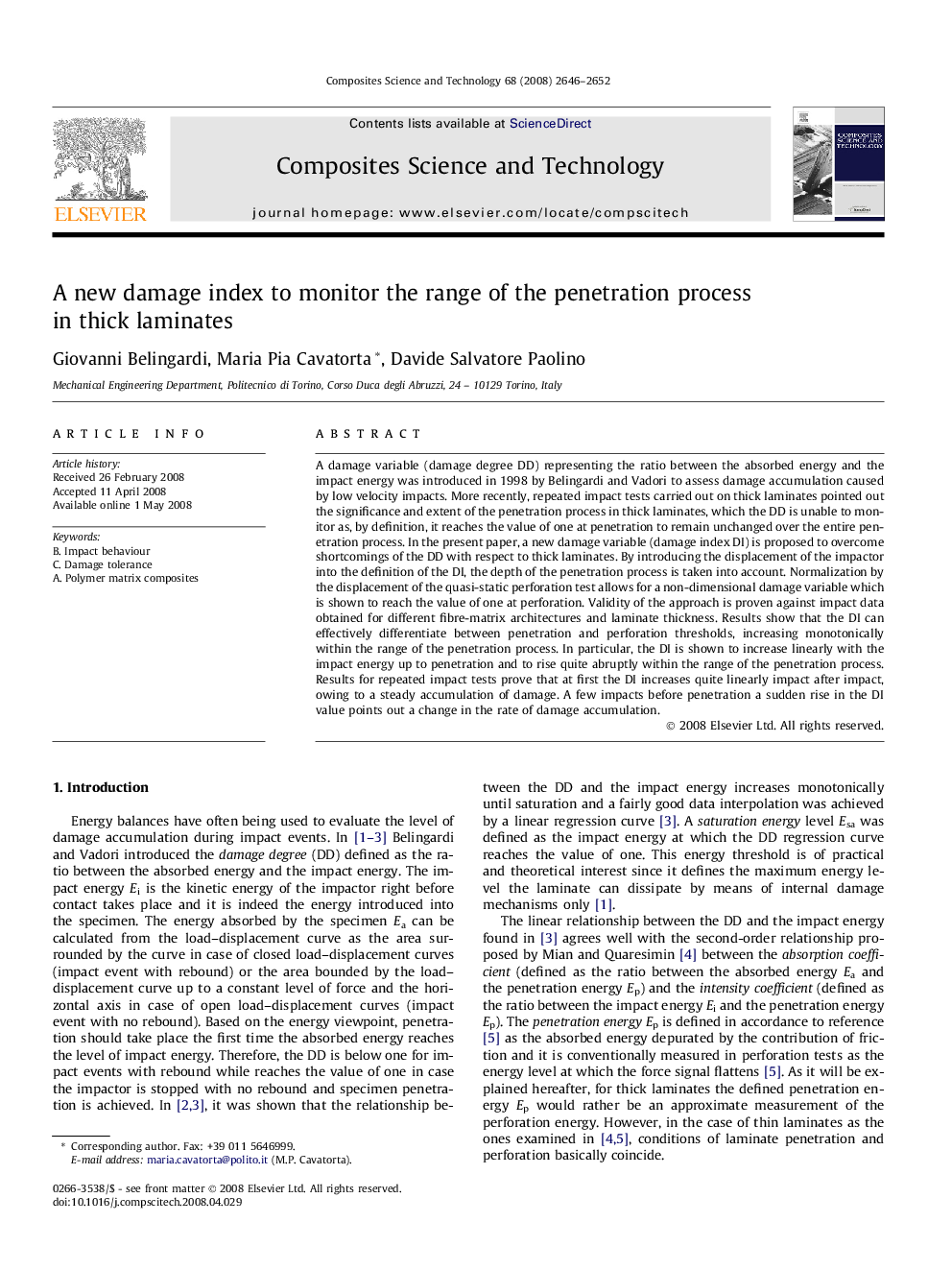| Article ID | Journal | Published Year | Pages | File Type |
|---|---|---|---|---|
| 822312 | Composites Science and Technology | 2008 | 7 Pages |
A damage variable (damage degree DD) representing the ratio between the absorbed energy and the impact energy was introduced in 1998 by Belingardi and Vadori to assess damage accumulation caused by low velocity impacts. More recently, repeated impact tests carried out on thick laminates pointed out the significance and extent of the penetration process in thick laminates, which the DD is unable to monitor as, by definition, it reaches the value of one at penetration to remain unchanged over the entire penetration process. In the present paper, a new damage variable (damage index DI) is proposed to overcome shortcomings of the DD with respect to thick laminates. By introducing the displacement of the impactor into the definition of the DI, the depth of the penetration process is taken into account. Normalization by the displacement of the quasi-static perforation test allows for a non-dimensional damage variable which is shown to reach the value of one at perforation. Validity of the approach is proven against impact data obtained for different fibre-matrix architectures and laminate thickness. Results show that the DI can effectively differentiate between penetration and perforation thresholds, increasing monotonically within the range of the penetration process. In particular, the DI is shown to increase linearly with the impact energy up to penetration and to rise quite abruptly within the range of the penetration process. Results for repeated impact tests prove that at first the DI increases quite linearly impact after impact, owing to a steady accumulation of damage. A few impacts before penetration a sudden rise in the DI value points out a change in the rate of damage accumulation.
